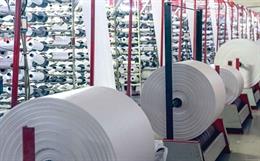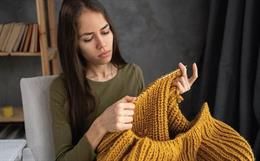Present Market and Growth of Technical Textiles:
According to a paper prepared by the Ministry of Textiles ontechnical textile industry, world market for technical Textiles products toaround 23.77 million tonnes by 2010, worth $127 billion and among them Indiaand China will be global demand growth driver for Asia. Asia's consumption fortechnical textiles products is expected to grow at 10,645,000 tons by 2010.This market is growing at approximately 4% CAGR. Particularly nonwoven productsare expected register higher growth rate in Asia than the world market with 9.6per cent per annum.
According to Mr. Andreas Lukas, Vice President of AndritzKústers GmbH, in Asia like in nearly all other regions of the world the technical textiles market will growconsiderably. The Asian textile industry also looks for differentiation interms of adding value to products. Environmental engineering has become a keyword and the textile machinery will grow exactly towards this focus, e.g. thefilter media section. Not one special region or nation will benefit from thistrend, but all companies that learn quickly to implement advanced productionprocesses. This means comprehensive process know-how as well as access toexcellent raw material and energy.
Chinais one of the important countries for technical textiles in Asia with thecountry accounting for approximately 50% of total spending in Asia. The demandis still growing at rate of 10 percent per year. Spending on nonwoven isgrowing at 30% a year. China is having more than 500-600 nonwovensmanufacturing companies. Geographically most of this industry is concentratedat eastern party of China with greater presence in provinces like Guangdong. This region alone contributes 30% in nonwoven production with around 140-150nonwovens producers present in the region with their high-tech lines. Otherimportant provinces include Fujian, Jiangsu and Zhejiang.
Factors driving growth in demand mainly includes changes inlifestyle of Chinese society led by increasing consumerism. This increasingconsumerism guides demand for technical textiles products such as Hygieneproducts and diapers, products for medical care and disposables. Alsorequirement is rising in wake of increasing demand for technical textilesproducts for infrastructural projects and in automobiles.
Other important Asian country is India. According to someindustry experts estimations overall technical textiles market for India will grow at a rate of 10% which is $189 million by year 2007-08. Use of functional textilesin fields like Automotive, Medical uses, construction is already on the move.
In India demand for high-end nonwoven products is increasingin hygiene and medical textiles fields which are driving growth for Spunlaceproducts. Amongst various types of Nonwovens Spunlace products has shownhighest growth after 2003. According to INDA's estimation spunlace has isexpected to grow at 30% in 2009 which was only 10% in 1994. Market size of India is approximately Rs. 25,000 crore by 2007-08. On an average India's growth in Technical textiles field is expected to be 13% annually. According tomany experts in the field India is well positioned for developing its Technicaltextiles field as it has good spinning background and is moderately equipped inweaving and other field. Also Government of this country is positively involvedin developing this promising field. According to Mr. Sheshadri Ram Kumar by
Mr. Dinesh Agrawal, Vice President (TEG Fabric Forming Nonwovens), A.T.E. Enterprises Pvt. Ltd. believes in the wake of sluggish growth and saturation in some sectors, in conventional textiles, has prompted many a textile players to look at nonwovens or a more generic "Technical Textiles", a hitherto unexplored segment. India's nonwoven and technical textiles industry is highly fragmented and it is still in the infancy stage. There are lots of opportunities in this field, as this segment is growing at 10% per year till 2012 and thereafter, the vertical is all set to grow at 20% each year. The estimated growth in these products offers lot of opportunities for the machinery suppliers / representatives, to cater to this growing market. The growth will be more witnessed in Asia, because most of these countries are still in the developing stage. The cost of production, availability of raw materials and man power etc makes it the ideal location for its promotion / growth.
When asked, out of 12 major categories of Technical textiles which category has more growth prospective from future point of view, Mr. Dinesh Agrawal said "The growth and development of infrastructure like roads, highways, airports, ports etc. in developing countries makes Geo-textiles the foremost sector for investment.
Health, Hygiene, disposable hygiene products, medical end use makes Medi-tech a very potential sector. We just have to increase the awareness of the usage of such products among huge population.
Agro-tech, in an agricultural country like India, offers enough scope for lucrative investments. A technical textiles has to reach out to country's agricultural education and research institute and to India's villages.
India's burgeoning automotive industry, both for vehicles and components is already demonstrating a huge annual growth. India is a logical manufacturing location, both for the domestic as well international automobile industry. This has been already corroborated by international car manufacturers for making India as a base for international car market. This does not mean that the other sectors of Technical Textiles have no future in India. In fact, India offers all that is required for the growth of Technical Textiles in the world."
While Mr. Andreas Lukas thinks as environment protection will become a main demand also in Asia like other parts of the world Technical textiles for filtration and isolation (buildtech) will gain major importance.
Needle Punching Technology:
Needle punching is the most widely accepted technology among various methods of producing nonwovens with approximately 30% of non-woven manufactured with this technology worldwide. This method is popular as it requires no water use, consumes less energy, has high production speed, and provides high degree of flexibility in production with greater scope of automation in the process.
As companies from various countries are now-a-days considering production methods which are not harmful to nature and waste less energy, needle punching emerges as their obvious choice as it can use recycled material and consumes no water and minimal energy compared to other technologies. Thus this technology is less costly.
Types of product that can be made using this technology are enormous. End use of product made by this technology includes Interlinings, Automotive Carpeting and insulation, Filters, Felts, Tennis Court Surfaces, and Blankets etc.
China has witnessed great advancement in growth of needle-punched products which find great use in automotive textiles and Geotextiles.
Spunlace
Spunlacing also known as hydro entangling was introduced as early as in 1973. It uses high forced jet of water to entangle fiber and prepare web of fibers. DuPont of USA is considered as one of the leading companies for this technology. Japan is also a prominent player in spunlacing technology. This technology is growing faster than any other technology for producing nonwovens as it is generally seen that investment in this technology can be recovered in shorter period compared to other technologies and profitability of this technology is high. It can be used for making composites with fabric.
Apart from its wide application in wipes, spunlace products have variety of applications like nonwoven bags, towel rolls, surgical gowns and packs, industrial end-uses such as roofing felts and geotextiles etc.
Spunbond Technology
Spunbonding, the technology which can be used to produce large variety of nonwovens, is being developed continuously since 1986. It is considered to be an economical process for producing nonwovens. Spunbonded goods are well known for its characteristics like air permeability, good wear properties, and environment friendliness as it uses no chemicals and are bonded thermodynamically. Uses of this technology mainly include products for medical industry like protective apparel, uses in hygiene industry for baby and adult diapers and in feminine hygiene products. Their technical applications include uses in construction and agriculture industry. They are also used as coating substrates, Dust collectors and in Filtration.
Meltblown Technology
Meltblown is quite similar to Spunbonding technique. This process is used to produce nonwovens from polymers and resins. The process which can also be used for producing microfibres uses hot air to attune extruded polymers. These thinned diameter fibers will be blown using air and ultimately will be collected on a collector screen producing a nonwoven web.
When meltblowns are combined with spunbonds and other types of nonwovens, it opens up opportunities for more application areas. This combination produces variations such as SMS, SSMMMSS and other types. Typical characteristics of products made using this technology include low strength, good Elasticity, Large area-to-weight ratio, High filtration efficiency and Thermal insulation etc.
Uses of meltblowns include high-degree filter media for air, liquid and particles, for absorbent clothes and wipes, babies and adult hygiene products, medical products, in protective clothing, breathing masks etc.
When questioned further about their views on future demand scenario for technologies/machineries for manufacturing technical textiles and factors that will form demand scenario for Asian technical textile machinery industry, Mr. Dinesh Agrawal said demand for these products will explode in the time to come. At this juncture we need to increase the AWARENESS of the usage of these products and their advantages. The investors need to invest in MARKETING to make their investments viable and exponential growth. Since its uses are hitherto not known or experienced, the investors are shirking from investments. We need investors with more RISK TAKING abilities. Unfortunately, these factors are lacking in our industry. And lastly, we need more investments coming from organized sectors, which have the capacities to put up a global size plant, have marketing strength and enough experience in risk taking.
The Government of India has provided so many growth drivers to invite Indian textile industry to invest in this industry, with very lucrative returns and short pay back periods.
While Mr. Lukas took a restrained stand and described this prospect with some suggestions "manufacturers of technical textiles machinery for Asia need to understand the entire production process with regards to raw material resources, required fibre properties and energy consumption. Then they will find a very promising market and have a good chance to expand."
References:
- http://www.engr.utk.edu/
- http://www.reicofil.com/
- Magazine: Nonwoven and Technical textiles
- http://www.buildtech2005.budtech.com/
- http://www.prlog.org/
- http://www.generalnonwovens.com/
- http://www.water-technology.net/







